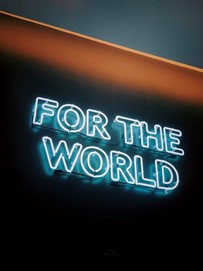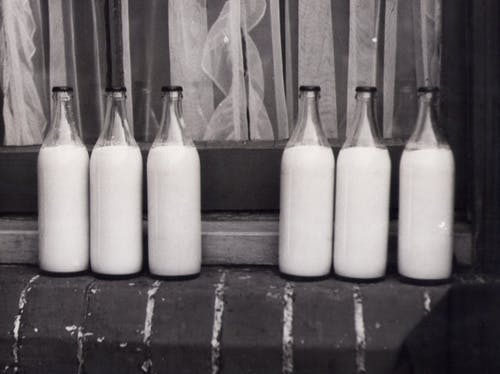Climate Change – Then and Now

by Amanda Hayward
As I write, COP26 is ending in Scotland, having been attended by many world leaders all arriving by jet planes, and chauffeured from the airport to the conference via gas guzzling SUV’s. Pictures in the press showed many of these cars waiting in streets around the conference area with engines idling whilst they awaited their charges.
But if we look back a few decades to the 1950’s, 60’s and 70’s, did they actually treat the world better than the more recent generations? Were they more ‘greener’ in their general approach to life?

Small individual shops were commonplace, meaning the larger supermarkets we are so used to seeing were practically non-existent. People would largely walk to the shops or take a bus if needed rather than individually driving. Food wasn’t wrapped in plastic, instead wares were displayed fresh and if a bag was needed it would have been a paper bag or wrapped in newspaper.
Produce was often grown locally so there were less lorries driving supplies from one end of the country to another.
Home grown produce was very popular and many families grew their own vegetables in gardens or allotments.
Large fast-food chains that are now prominent in every town in the country didn’t exist, ‘fast food’ was the odd fish and chip supper enjoyed out of yesterday’s newspaper, rather than a polystyrene box with accompanying plastic drinks cup and plastic straw. It is no wonder that these big fast-food companies are under fire to reduce their carbon footprint.
Animal agriculture is one of the highest emitting sectors without a low CO2 plan. Agricultural emissions, including those from meat and dairy, are on track to contribute around 70% of the total allowable greenhouse gas emissions by 2050 that would keep the rise in the world’s temperature under 2C this Century (https://www.bbc.co.uk/news/science-environment-47029485)
With steps put in place now that these companies must follow, investors say this will help to minimise future risk.
Eugenie Mathieu, from Aviva Investors, says “From field to fork, investors want to understand which food companies are monitoring and minimising the long-term environmental risks in their supply chain. This engagement sends a clear message to the fast-food sector that investors expect them to deliver sustainable supply chains.” (https://www.bbc.co.uk/news/science-environment-47029485)
Coffee houses now seem to be on every corner of every town, and it is nothing new to see people walking around drinking coffees or grabbing a hot drink whilst they are out and about. Although we are all encouraged to use reusable cups, a recent survey found that over two-thirds (69%) of people have their own reusable coffee cup but only 1 in 6 say they remember to use them every time they buy a hot drink. (https://www.circularonline.co.uk/news/push-to-double-the-uptake-of-reusable-cups/ ). This means that around 500,000 plastic cups are littered daily. Old fashioned tea shops rarely offered a takeaway option, instead tea was poured and served in china cups whilst dining in.
Holidays nearly always meant driving or taking a coach to a nearby seaside. It was rare that families would jet off to foreign climes, unlike holidays these days when going abroad is considered the norm.
And how many of us can remember the milkman arriving daily in an electric powered milk float delivering milk straight to the doorstep in recyclable glass bottles?

Previous generations of course, didn’t get it all completely right, but in many aspects of how they lived, their carbon footprint was a lot less than that of the current generations. Would it be an idea for the world leaders and indeed us as individuals to take a look at our forbearers and take some green tips from them?





